This holiday season has been one of contradictions. Darkness and light, hope and despair, joy and pain.
A few days before Christmas, the bullies whose goal is to eliminate from the world everything that makes life worth living struck again, inflicting horrific and agonizing pain. Like so many other places and things in the United States, Arlington National Cemetery has been transformed into something sickening, disgusting, and horrific. It has become yet another symbol of me being rejected, excluded, and hurt, yet another reminder of the atrocities that have taken place, yet another trigger of grief and rage so strong that I feel sick to my stomach at the mere mention of its name. Arlington has been transformed by bigotry and intolerance, from a cemetery honoring the dead into a shrine to sameness, compliance, and conformity. Where a cemetery is supposed to be, there is now nothing but a hideous scar in the world. Arlington is yet another place that has been physically transformed, using cranes and work crews at taxpayer expense, to ensure that people like me do not feel welcome there. To ensure that autistic people, rebels, people who think differently, people who are different from the norm in any way, will feel rejected and excluded. The fact that anyone would think that this is a good thing to do is incomprehensible and unimaginable.
And just a couple of days after Christmas, on December 27, the bullies inflicted horrific and agonizing pain yet again, this time in Jacksonville, Florida. At the orders of the bully who was elected mayor, Donna Deegan, a monument honoring the women of the Confederacy was obliterated from a city park, a park which, by the way, had been known as Confederate Park, but of course Deegan ordered that name to be obliterated too. Because God forbid that anyone who is different from the majority in any way be allowed to exist. God forbid that anyone unique or different be honored in any way. Only people like Donna Deegan matter, apparently, and no one else. No one else’s feelings or perspectives matter. Only hers.
Just like the kids who bullied me when I was growing up, the kids who wore makeup, highlighted their hair, spoke using the latest slang, dressed in the latest fashions, listened to whatever music was popular at the time, watched whatever TV shows were considered “cool,” and IM’d with their friends after school instead of reading about and drawing historical figures. They are the only people who matter, apparently, and no one else. No one cares about my feelings or my perspective. No one cares about my right to exist. They only care about themselves and the people who look like them, talk like them, act like them, and think like them. In their eyes, no one else matters.
The atrocity, which cost $187,000, was funded by a grant from an organization called the Jessie Ball duPont Fund (source here). Which means that yes, people actually donated money to inflict horrific and agonizing pain on other people. People actually donated money for the purpose of destroying everything that makes life worth living. The fact that someone would donate money to such a cause is incomprehensible, unimaginable, and utterly sickening.
Statues and monuments were the only thing in our society that actually reflected my perspective and my values, that actually made me feel represented and included. So of course, they had to go. Of course, they had to be destroyed. Of course, it was deemed unacceptable for me to feel even the tiniest bit represented or included. Apparently, it wasn’t enough for the makeup-wearing, IM-ing, mindless conformists to control the media, the economy, pop culture, fashion, technology, etiquette, and social norms. They also had to take away the one thing that actually reflected my values and not theirs, the one thing that was beautiful to me, the one thing that made my life worth living. They had to turn statues and monuments into yet another thing representing their own values, yet another thing to make me feel condemned, rejected, and excluded, yet another cudgel to beat me with.
Society decided that because I am different from the majority, I deserve the death penalty.
That is what the Biden administration’s Department of Defense did at Arlington National Cemetery.
And that is what Donna Deegan did in Jacksonville, Florida.
Anyway, I digress.
Suffice it to say that each time a new atrocity occurs, I am assaulted by pain so horrific and agonizing that it cannot be described in words. Each new atrocity brings with it the pain of all the previous ones, and I am buried beneath the avalanche of atrocities. I am crushed by the weight of the pile, as if I will never be able to dig my way out. I feel as if I’ve been swept away by a tidal wave, lost in a vast sea of atrocities, directionless, as if I will never find my way back to shore.
It is difficult to see any purpose in celebrating the holidays given the vast and ever-growing mountain of atrocities. Putting up a Christmas tree, looking at beautiful lights, playing Christmas music, baking, buying festive foods, all these activities seem insensitive, superficial, tone-deaf. When the tidal wave of atrocities attacks, I hate the entire society. Because this society, as a whole, allowed the atrocities to happen. This society has decided that the destruction of everything that makes my life worth living is somehow an acceptable outcome, that there is no need to stop it, to reverse it, to condemn it, or to do anything about it. And because every person, every organization, and every company are part of the society, every possible way of celebrating the holidays is to some extent “contaminated.” When the pain is at its strongest, and my mood at its darkest, it seems that to celebrate the holidays would be to condone the atrocities.
Yet I decided to try, anyway.
Not because I condone the atrocities. Not because I wish to “move on,” or take my mind off of what happened, or dedicate my time and energy to something else, or find a new thing to be interested in.
But rather because I believe that I am a good person, and that I deserve to have joy in my life. I believe that the historical figures would want me to feel joy. Without joy, it would be impossible to summon the will to keep fighting. Just as the Confederate soldiers found ways to celebrate Christmas as best as they could, despite being exhausted and starving, missing their homes, shivering in their threadbare uniforms, suffering from illnesses and injuries, and traumatized from horrific battles, I celebrated as best as I could.
Of course, I wish to eventually heal from the horrific and agonizing pain that has been inflicted. (No person wants to experience horrific and agonizing pain.) And I believe that over the past couple of years, I have made slow and halting progress in doing so. But the healing does not consist of “moving on,” and it certainly does not consist of forgiving the perpetrators. Rather, healing consists of centering my life around the historical figures, doing whatever I can to honor them and keep them alive, incorporating them into everything that I do, and finding joy in them.
Over the course of the holiday season, my soul vacillated between these two states: being engulfed by horror and despair on the one hand, and experiencing rays of hope, joy, and even excitement on the other.
I tried to spend my holiday season doing things that I truly wanted, as opposed to things that I felt obligated to do. Some of these activities didn’t have anything to do with historical figures, but most did. Historical figures are the thing that I love more than anything else in the world, after all, and so it makes sense that most of the things that bring me joy would include them. So, after this long and rambling introduction, here are a few of the things that I did to celebrate during the holiday season:
Buying and setting up a Christmas tree and decorating it with ornaments honoring some of my favorite historical figures.



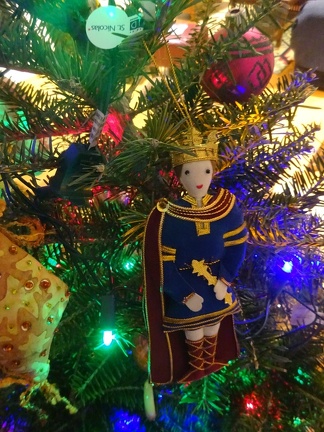



Putting up Christmas lights on the front of my house…

And in the back of my house, where Stonewall Jackson lives.

Sending out Christmas cards

Buying some festive foods from Trader Joe’s

Visiting the Christmas tree at the pond near my house…

… and the World War I memorial, which was decorated for Christmas.

Checking out the Christmas lights at Assembly Row, the area where I work…


… and going to an ice sculpture walk, also at Assembly Row.


Looking at Christmas decorations in Boston, paying a visit to Christopher Columbus, and giving him a little gift.
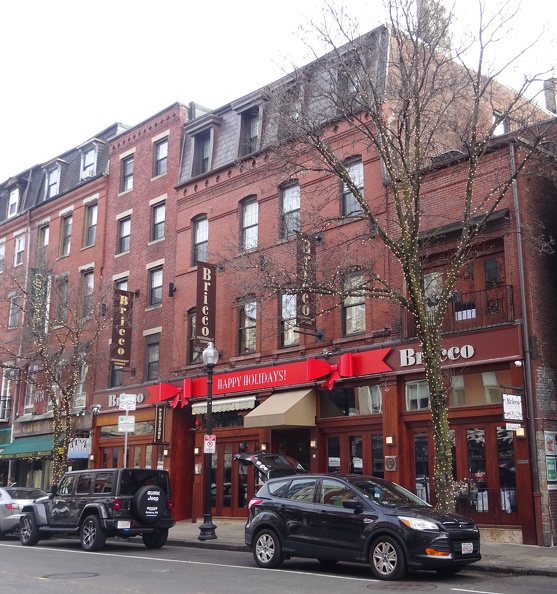
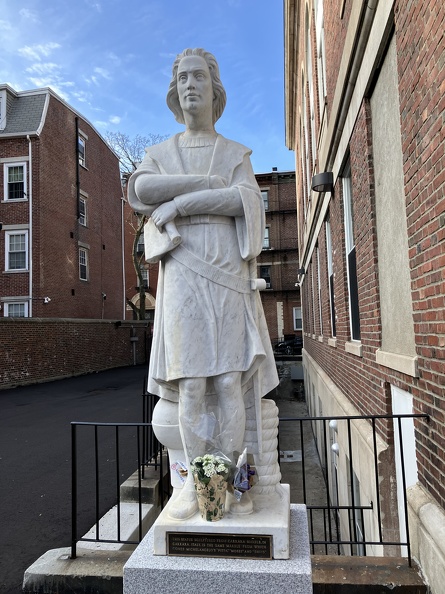
Eating Chinese food

Visiting a house with amazing Christmas lights

Making cinnamon bun pancakes

Making photo calendars to give as Christmas gifts (including, of course, a couple of my favorite statues)


Asking for toy soldiers as Christmas gifts…
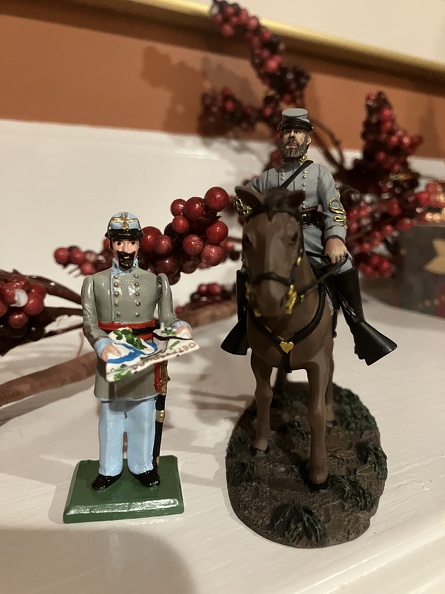
… and receiving several other gifts as well, such as Confederate coffee, a Christopher Columbus teacup, and a necklace with a locket containing pictures of historical figures inside!


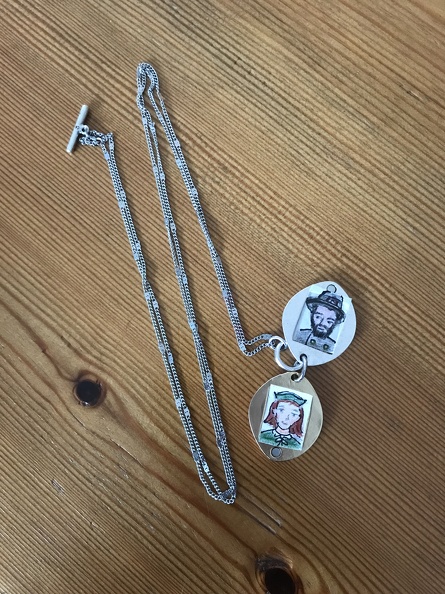
Finally, I spent Christmas night sitting on my couch, writing while watching a football game. The lights of my Christmas tree, with historical figure ornaments hanging from its branches, twinkled softly in the background, and the calming pine scent filled the living room. Although sports are something that can go either way for me regarding being “contaminated” by the statue genocide, I really enjoyed watching the game, particularly the interviews and the festive montages that played during it. Spending Christmas night with only my historical figures for company might strike some people as sad or pathetic, but for me, it brought a sense of peace and Christmas spirit that was exactly what I needed.
Here’s to more joy, more peace, and more historical figures in 2024.





























